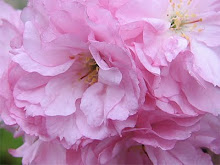
I think I already mentioned that I didn't like very many vegetables when I was a kid. But, fortunately, there were occasions when I was introduced to a new vegetable and I liked it very much. One such vegetable was the turnip. One winter evening, I was having dinner over at a friend's house and her mom cooked us an old family recipe -- I forget what it was called -- with browned, crumbly hamburger, onions, and diced turnips, all wrapped up in a pie crust. I had never heard of having pie for dinner before! Because of the novelty of eating pie, I was willing to try this new, mysterious vegetable -- the turnip. It tasted so good, I loved it! And I was forever sold on it.
Turnips are in the very most yang category of vegetables. They grow vertically underneath the ground, are round in shape, and have red or purple on the parts of the skin that protrudes above the ground and is touched by sunlight.
George Ohsawa has a soup recipe that includes turnips that I haven't tried before. It's called "72. Au polenta" (See page 70 in Zen Macrobiotics, by George Ohsawa.) It has turnips, carrots, onions, cabbage, and coarsely ground cornmeal. Sounds yummy!
Turnips are part of a macrobiotic centering diet because of their yang qualities, which help you balance out any overly yin qualities you may have. Their yang qualities are also good for balancing with the yin qualities of cold, wet weather, winters, or climates.
Notes:
• According to Carl Ferre in his book, Pocket Guide To Macrobiotics, there are 44 different vegetables in a macrobiotic centering diet. For the whole list, see my article, "Vegetables For Centering."
• You can get both books, Pocket Guide To Macrobiotics and Zen Macrobiotics, from the George Ohsawa Macrobiotic Foundation website.






















































